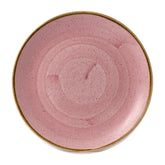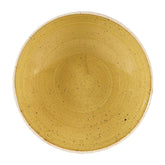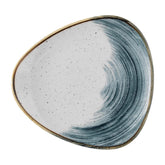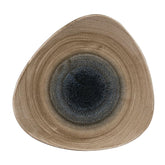Have a Seat: A Guide to Table Sizes
When it comes to restaurants, the dimensions of tables play a major role in the efficiency of the establishment. There is a great selection of hospitality table tops in various shapes and sizes. Before choosing the appropriate table size, it is important to think about the number of guests you will be expecting and the purpose of the table.
In order to maximise the number of covers within a restaurant or bar area, our guide provides information on the sizes and styles of tables. This includes details on the tabletop dimensions, thickness and edging options.
Have a Seat: A Guide to Table Sizes
In the hospitality sector, a table top denotes the number of people who can be accommodated in a restaurants dinning area. This is referred to as the amount of covers available.
The following are some tips to keep in mind when selecting a table top cover:

Appropriate Restaurant Table Dimensions
The right size of table for a restaurant is something that needs to be taken into account. It is important to consider the right dimensions in order to ensure the space is utilised in the best way possible. It is also important to find the right balance between comfort and space efficiency.
In order to ascertain how many covers a restaurant can accommodate, it is necessary to be aware of the table dimensions. Fortunately, our table size guide is available to guarantee that the right choices are made.
As an example, if you plan to seat 10 people, a round table top should have a diameter of at least 1800mm while a rectangular top should measure 1300mm x 750mm to ensure guests are comfortable. The size of a table in a restaurant is also determined by the type of service you are providing - for drinking tables, 20% less space is needed than for quick meals, whereas fine dining requires additional space for extra cutlery and tableware. If you need additional covers, one tip is to use smaller square tables and arrange them at a 45-degree angle.

What shape of table is most suitable for restaurants?
Within the hospitality industry, square tables with either straight cut or undercut chamfer edges are often seen. This is because they can be utilised as a single unit or joined together side by side to increase the number of diners around a single table when rearranging the dining area.
Chamfering or bull nosing is an ideal choice for round tables which are not intended to accommodate a large number of diners and are standalone pieces. Most hotel eateries take advantage of a mix of shapes and sizes to make the general design more appealing and to provide flexibility when rearranging the space.
Standard Table Heights in Restaurants: An Overview of Table Bases
When thinking about restaurant table layout and spacing, it is not only important to focus on the looks, but also on what is beneath. The type of table base used will depend on the shape of the table top and can influence how much room is left for people's legs. To guarantee a good dining experience, it is essential to remember the following to make sure maximum space and comfort are achieved.
Ensure that your guests have an unimpeded seating area and that the chairs can be tucked away snugly underneath the table. The proportion between the size of the table top and its stand is essential for the steadiness of the table and it is also beneficial when staff need to move the tables and reconfigure the layout. Also, think about the thickness, height and edging of the furniture.
In the hospitality industry, single or twin pedestal bases are the most favoured due to the following reasons:
- Numerous sizes, styles, and finishes
- Unlike typical table legs, they don't intrude on guests' leg space and are less noticeable
- Configurability is a plus
- Cost effective
- Long lasting and won't get weak like four-legged when moved
It's all tall task to select the ideal height for restaurants tables!

When it comes to an outdoor dining area, deciding on the perfect table height can be a challenge.
When selecting the appropriate table height for a hospitality environment, there are a variety of options available. However, it is essential to think about making sure people can comfortably sit without restriction. Making sure the chairs can fit properly underneath the table is a must, as that allows customers to cross their legs without making them feeling uncomfortable.
Poseur tables- For a pleasant seating experience, these tables should be at approximately 1100mm in height. This is to match the average height of bar stools, which are generally taller in size.
Restaurant tables- An ideal table height for restaurants is 720mm. Having a table that is too tall (which can be caused by having a large top on a regular base) can create too much space between the seating and the table, making the dining experience uncomfortable.
Bar tables and side tables- For a bar or restaurant waiting area, bar tables/ side table are a great choice and should be approximately 600mm in height, which is the perfect size to hold a beverage for a late-night outing.
Coffee tables- Generally, they are not used for dining purposes, with an average height of approximately 450mm. In some cases, these tables can be placed in front of lounge chairs, for instance when afternoon tea or snacks are served.
Something to Ponder About
This guide on restaurant table sizes guarantees that your establishment will be able to fit the most people possible without it becoming too congested. A smartly organised dining area can reduce the time customers have to wait for their table, with the flow of traffic being a key factor. A room with too many people moving around will increase the noise level, and the likelihood of accidents occurring, and can impede the overall turnover rate.






